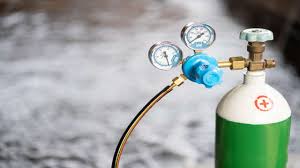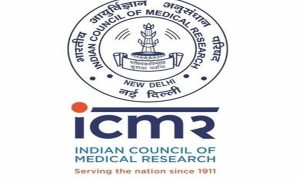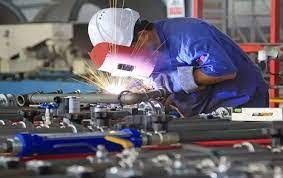Planet Earth is rich in constituents that make life possible, including the air we breathe. Our atmosphere is the combination of several gases, of which 78 % is nitrogen, 21% oxygen, and the remaining 1% is other gases.
The most important of them all is oxygen, in the absence of which a human body stops functioning. A human body takes in about 550 litres of pure oxygen per day.
Who knew something so important yet so overlooked will be a game-changer in the fight against coronavirus. The need and access to medical oxygen have brought the country together.
The second wave of the coronavirus pandemic has not just brought the use of different types of oxygen to light but is also making people realise the significance of breathing. Oxygen concentrators, oxygen tank, liquid oxygen, and several other terms, a common man had hardly heard before in a normal conversation.
With the growing demand for oxygen concentrators and cylinders, one must know the difference between the two, how and when to use which.
Medical Oxygen
Medical oxygen that is in huge demand today, isn’t easy to generate. The generation of medical oxygen requires technology, which is costly and requires proper maintenance. The oxygen available in the air (21%) has to be concentrated ( ie, inessential ingredients are removed to make it pure) into medical oxygen fit for the treatment of human beings.
Medical oxygen is highly pure in nature, devoid of any contamination. To collect pure oxygen, a designated technology is used to collect oxygen from the atmosphere, which results in the separation and distillation of atmospheric air.
After oxygen is collected, it is graded into seven different categories as per its use. For example, welding oxygen is used for welding purposes. While medical oxygen (98% concentrated) is used for oxygen therapy or treatment in hospitals.
Medical oxygen is used to provide life support for artificially ventilated patients, restore tissue oxygen tension in conditions like shock, hemorrhage, trauma, respiratory arrest, etc. A patient suffering from covid-19 requires medical oxygen due to a shortage of oxygen in the body, especially the lungs.
Industrial Oxygen
As the name suggests, industrial oxygen is used in various industrial activities. 85% of the oxygen produced is utilized by companies and the rest 15% by hospitals for treating patients. Steel industry to the paper industry, oxygen is an important requisite in these industries for their processes.
For instance, oxygen is used in the glass industry to reduce fuel consumption, lower nitrogen oxide emission, and improve glass quality.
On the other hand, in chemical, pharmaceutical, and petroleum industries, oxygen is used as a raw material in the manufacture of ethylene oxide, propylene oxide, synthesis gas using partial oxidation of a wide range of hydrocarbons, ethylene dichloride, hydrogen peroxide, nitric acid, vinyl chloride, and phthalic acid.
Hospitals use liquid oxygen in contrast to gas forms used in industries. Medical oxygen is governed by strict supply regulations and has to be properly dispensed.
Cryogenic Liquid
Cryogenic liquids are liquified gases kept in their liquid state at a very low temperature. The word cryogenic means producing, or related to, low temperatures. All cryogenic liquids are extremely cold. Cryogenic containers carry substances less than -150°c to absolute zero temperature.
At normal temperature and pressure, all cryogenic liquids turn to their gases form. Oxygen is used in its liquid form for medical purposes and is kept at -185°C to maintain its form.
Now let’s understand what is a concentrator, oxygen cylinder and what is their use in medical treatment.
In hospitals and for medical purposes, oxygen can be supplied through an oxygen concentrator, oxygen cylinder or in any other form depending upon the need of the patient and their medical condition.
Oxygen Concentrators
Oxygen concentrators, a medical device concentrates oxygen from the atmosphere. Our atmosphere has 21% oxygen, 78% nitrogen, and 1% other gases. An oxygen concentrator takes in this air, filters it, sends nitrogen back into the air, and works on the oxygen content. This oxygen is then supplied to the patients to meet their oxygen requirements.
According to a 2015 World Health Organisation report, concentrators are designed for continuous operation and can produce oxygen 24 hours a day, 7 days a week, for up to 5 years or more.
They are portable and run on electricity. It can supply 90 to 95 % pure oxygen ranging between 1 to 10 litres of oxygen per minute. It is useful for patients with mild to moderate symptoms isolating at home due to its small size, and ability to produce oxygen 24 hours a day. However, this can be costly.
A critical covid-19 patient’s medical oxygen requirement can be around 40 to 50 litres per minute.
Oxygen Cylinders
An oxygen cylinder holds the oxygen under high pressure. Cylinders are usually used in hospitals. It can be refilled and used as and when required. A cylinder may cost around Rs 8,000 to 20,000 and is a one-time investment.
Vacuum insulated evaporator
The third category is the use of a Vacuum insulated evaporator (VIE), which is a form of pressure vessel that allows the bulk storage of cryogenic liquids such as oxygen, nitrogen to name a few. This liquid can then be used for industrial and medical applications.
What is the government doing to meet the oxygen demand?
-The Indian railway has started transporting oxygen via its special oxygen express. Oxygen express has been running to provide liquid oxygen to deprived states.
- The government has put a ban on all sorts of industrial use of liquid oxygen to cater to the need for medical treatment.
-551 dedicated Pressure Swing Adsorption (PSA) medical oxygen generation plants will be installed in the country through the PM Cares fund.
-India will also import over 10,000 oxygen concentrators from the USA.
-The government has also roped in private players to utilise their full potential, and use tankers for transportation to meet the country’s demand for medical oxygen.






















 WhatsApp us
WhatsApp us